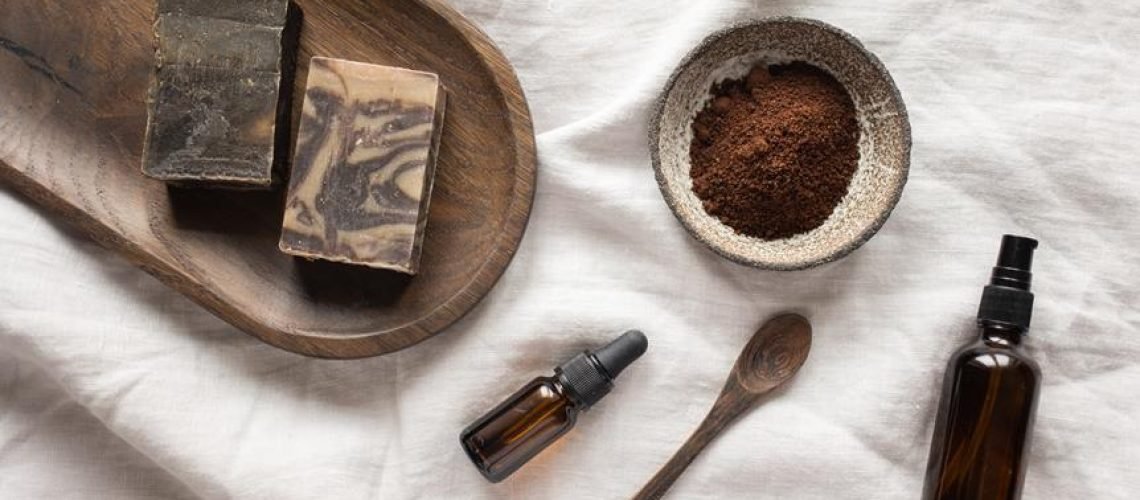Are you in search of the perfect cleanser to achieve healthier, clearer skin? Look no further than the world of double cleansing, a technique that has gained popularity for its ability to thoroughly remove impurities.
Specifically, this article will delve into the differences between cleansing balm and oil, two types of oil-based cleansers. By breaking down their composition, application, and effectiveness in removing makeup and sunscreen, we will help you determine which option is best suited for your skin type.
Let's explore the intricacies of cleansing balm versus oil and make an informed choice for your skincare routine.
Key Takeaways
- Double cleansing involves using an oil-based cleanser followed by a water-based cleanser.
- Oil cleansing effectively removes oil-based substances, makeup, sunscreen, and dirt from the skin.
- Cleansing balm has a solid, buttery form that transforms into a silky oil when applied to the skin.
- Cleansing balms are gentler than cleansing oils for removing oils from dry skin and offer extra hydration.
The Composition of Cleansing Balm and Oil
Analyzing the composition of cleansing balm and oil reveals the unique characteristics and properties that differentiate these two oil-based cleansers.
Let's start with the benefits of using a cleansing balm for makeup removal. A cleansing balm, typically in a solid, buttery form, transforms into a silky oil when applied to the skin. It effectively removes oil-based substances, makeup, sunscreen, and dirt. The warmth of the skin helps the balm emulsify into a milky substance that cleanses and nourishes the skin.
On the other hand, cleansing oil, in its liquid form, is ideal for double cleansing. It dissolves oil-based impurities and attracts stubborn residues, making it effective in removing makeup and dirt. Properly using cleansing oil for double cleansing involves applying it to dry skin, massaging gently, and rinsing off with warm water.
Both cleansing balm and oil offer unique advantages, catering to different skin types and preferences.
Application and Texture Differences
When comparing cleansing balm and oil, it is important to consider the application and texture differences between the two.
Cleansing balm, with its solid, buttery form, transforms into a silky oil when applied to the skin. It absorbs the warmth of the skin, emulsifying into a milky substance that effectively removes oil, makeup, and residues. However, cleansing balm may feel heavier on the skin and can be less effective at emulsifying compared to traditional cleansing oils.
On the other hand, cleansing oil has a liquid texture and is easily spread across the skin. It is lighter in consistency and can be more suitable for those with oily skin.
Different techniques for applying cleansing oil or balm include massaging it onto dry skin and then rinsing with water or using a damp cloth to remove the product.
Both cleansing balm and oil have their pros and cons, so it's important to choose the one that suits your skin type and preferences.
Effectiveness in Removing Makeup and Sunscreen
In terms of effectively removing makeup and sunscreen, both cleansing balm and oil excel at breaking down and removing stubborn oil-based substances from the skin.
Here are the pros and cons of using cleansing balm for makeup removal:
- Pros of using cleansing balm:
- Gentle and nourishing formula that effectively removes makeup without stripping the skin.
- Ideal for removing waterproof and long-lasting makeup.
- Provides hydration and leaves the skin feeling soft and supple.
- Can be massaged into the skin, promoting relaxation and a sense of self-care.
On the other hand, here are the pros and cons of using oil for sunscreen removal:
- Pros of using oil:
- Effectively breaks down sunscreen, even water-resistant or physical sunscreen formulas.
- Helps to dissolve and remove excess sebum, dirt, and impurities from the skin.
- Leaves the skin feeling clean, refreshed, and moisturized.
- Can be used as part of the double cleansing method for thorough makeup and sunscreen removal.
Cleansing Balm Vs Oil: Emulsification and Residue
The emulsification process and residue left behind differ between cleansing balm and oil.
When it comes to emulsification, cleansing balm has a solid, buttery form that transforms into a silky oil upon contact with the skin. This allows it to effectively dissolve oil, makeup, and residues.
On the other hand, cleansing oil has a liquid texture that easily spreads on the skin. Both types of cleansers emulsify, which means they can be washed away with water, taking the impurities with them.
In terms of residue left on the skin, cleansing balm may leave a slightly heavier feeling due to its solid form. However, it is still gentle and nourishing for the skin.
Cleansing oil, being a liquid, usually leaves less residue and can provide a lighter feeling on the skin.
Ultimately, the choice between cleansing balm and oil depends on personal preference and the specific needs of your skin.
Choosing the Right Option for Your Skin Type
Both cleansing balm and cleansing oil offer different benefits and considerations depending on your skin type. Here are the pros and cons of each option:
- Cleansing Balm:
- Pros:
- Suitable for dry and sensitive skin types as it provides extra hydration.
- Effective at removing waterproof makeup and sunscreen.
- Gentle formulation minimizes the risk of irritation.
- Cons:
- May feel heavier on the skin and leave a greasy residue.
- Less effective at emulsifying compared to traditional cleansing oils.
- Cleansing Oil:
- Pros:
- Attracts and breaks down stubborn oily residues, making it ideal for oily skin types.
- Highly nourishing for dry skin, leaving it softer and smoother.
- Cons:
- Can feel greasy upon application for oily skin.
- May require a second cleanser to remove residues.
Common misconceptions about oil-based cleansers include the belief that they will make oily skin oilier or that they are not suitable for acne-prone skin. In reality, oil-based cleansers can effectively cleanse and nourish all skin types when chosen according to individual needs.
Liberation comes from understanding and embracing the unique benefits of each option for your specific skin type.
Final Verdict: Which Is Better for Your Skin?
After weighing the pros and cons of cleansing balm and cleansing oil, determining which option is better for your skin ultimately depends on your individual skincare needs and preferences. Both cleansing balm and cleansing oil have their advantages and differences in ingredients.
Cleansing balm is effective at removing waterproof makeup and sunscreen, making it a great choice for those who wear heavy makeup or spend a lot of time outdoors. It has a solid, buttery form that transforms into a silky oil when applied to the skin. However, it may feel heavier on the skin and can be less effective at emulsifying compared to traditional cleansing oils.
On the other hand, cleansing oil is a liquid texture and is highly nourishing for dry skin. It attracts and breaks down stubborn oily residues, making it beneficial for oily skin types. It also makes the skin feel softer and smoother. However, it can feel greasy upon application and may leave an extra layer of hydration that can feel heavy for oily skin.
Ultimately, the choice between cleansing balm and cleansing oil depends on your personal preferences, skin type, and skincare needs. Experimenting with both options can help you determine which one works best for you.
Frequently Asked Questions
Are There Any Specific Ingredients That Are Commonly Found in Cleansing Balms and Oils?
Common ingredients in cleansing balms and oils include nourishing oils, emulsifiers, and botanical extracts. While both are effective in removing makeup and sunscreen, cleansing balms are often better at removing waterproof formulas due to their thicker texture.
How Should I Apply Cleansing Balm and Oil to My Skin? Is There a Specific Technique?
When applying cleansing balm or oil, it is important to use specific techniques for optimal results. Gently massage the balm onto dry skin, while the oil should be applied on dry or damp skin.
Are There Any Notable Differences in the Texture Between Cleansing Balm and Oil?
The notable differences in texture between cleansing balm and oil lie in their physical forms, with cleansing balm having a solid, buttery consistency and oil having a liquid texture. For dry skin, cleansing balm provides extra hydration compared to oil.
Which Option Is More Effective at Removing Waterproof Makeup and Sunscreen?
When it comes to removing waterproof makeup and sunscreen, both cleansing balm and oil can be effective. Cleansing balm tends to be more effective at removing these stubborn substances due to its solid, buttery texture.
Can You Explain the Process of Emulsification and How It Relates to Cleansing Balm and Oil?
Emulsification is the process by which a solid or liquid substance transforms into a milky texture when combined with water. It allows cleansing balms and oils to effectively remove impurities, makeup, and residues, providing the benefits of thorough cleansing and nourishment for the skin.
Conclusion
In the battle between cleansing balm and oil, the choice ultimately depends on your skin type and preferences. Both options offer effective cleansing and removal of impurities, makeup, and sunscreen.
Cleansing balm excels at tackling waterproof makeup and sunscreen, while oil cleansers have the added benefit of regulating sebum production.
So, whether you prefer the balm's texture or the oil's emulsification properties, rest assured that both options will help you achieve a clearer complexion.
Choose wisely, and may your skincare journey be ever radiant.







